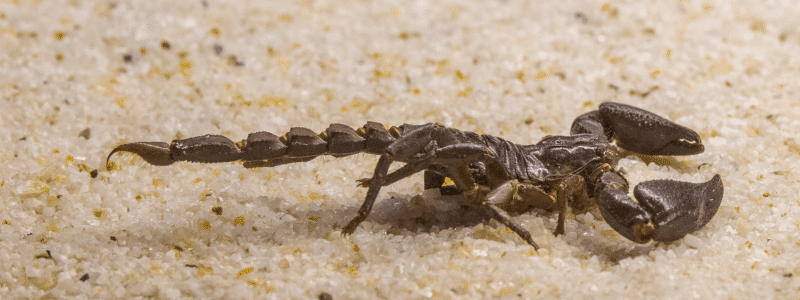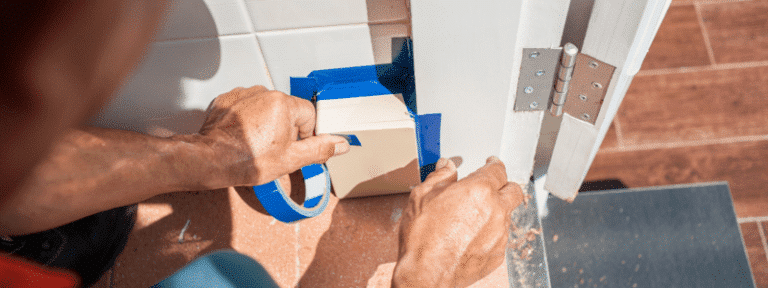The cooler temperature usually means fewer mosquitos, ants, and other insects outside, but that doesn’t mean they disappear altogether. Keeping your home and your family safe with pest control is more important than ever during the colder months in Phoenix.
In this blog, we’ll look at the following:
- What is overwintering?
- What are the most common winter pests in Arizona?
- Where do pests migrate in your home?
- Residential winter Phoenix pest Control
- Commercial winter Phoenix pest control
- Tips for preventing residential and commercial pests
What is Overwintering?
Overwintering is a collection of behaviors by which insects, plants, and animals attempt to survive winter conditions that would otherwise be unmanageable.
To escape the frigid temperatures outside, many pests will try to invade Arizona homes to complete a process called overwintering. This is bad news for homeowners because it often means extra house guests you weren’t planning for.
The two most common behaviors of overwintering are hibernation and migration. When it comes to pests, most take on the migration approach. Because most pests can’t fly long distances as birds do, many pests will attempt to migrate to the warmth of your home for their overwinter. Once pests get inside, they can thrive and multiply and pose a threat to your space.
What are the Most Common Winter Pests in Arizona?
- Spiders: Brown recluses, cellar spiders (daddy long legs), and black widows
- Termites: Subterranean termites and dry wood termites
- Cockroaches: German cockroaches, American cockroaches, and brown-banded cockroaches
- Ants: Carpenter ants, fire ants, “crazy” ants, and pavement ants
- Bed bugs
- Rodents, most commonly mice and rats
Where Do Pests Migrate in Your Home?

Many insects don’t show signs of destruction, so finding them might be challenging. Since they will be trying to find warmth and protection, the first places to look will be attics, basements, and crawl spaces. Next, check cupboards, closets, and behind large appliances. They can even be found hiding in the cracks of the walls.
Residential Winter Phoenix Pest Control
Wintertime for warm-blooded pests like rats and mice and cold-blooded ones like ants and cockroaches means harsh climatic elements they must seek shelter from.
The best way to ensure your home does not become a bed and breakfast for insects and pests this winter is to take adequate precautions. You can inspect the main entry areas for pests and insects—including windows, doors, and cabinet spaces.
Commercial Winter Phoenix Pest Control
With the holiday season in full swing, businesses of all sorts and sizes are undoubtedly immersed in the various festivities employees and customers alike participate in.
Although inclusion and goodwill towards one’s fellow human beings is always a theme during this time of year, gracious hospitality should not extend to the pests looking to profit from a lack of pest control preparation.
Tips for Preventing Residential and Commercial Pests

Our team at Insectek wants to ensure that no pesky critters get in the way of the festivities by offering the following tips to help you secure your house and commercial business space and keep pest problems from spoiling your season.
Maintain a Clean Space
Be aware of leftover snacks and treats in kitchens, living rooms, bedrooms, and so forth. Food leaves crumbs behind, and insects like ants are attracted to sugary sweets. Ensure food is not left unattended or open overnight on counters or any other accessible space.
Likewise, insects like cockroaches and spiders love to hide away in moist, dark places such as piles of firewood or garbage. Taking out the trash often and preventing old food from sitting in the sink can deter any interested pests.
Fix Leaks and Cracks
Doors and Windows are easy points of entry for small pests like ants. Minuscule cracks between the walls, windows, and door frames can easily go unseen by human eyes and serve as readymade access portals for pests. Likewise, these openings can allow leaks and moisture to build up, attracting different insects.
To test for these openings, take a piece of toilet paper and hold it loosely up to the space between your window frame and wall. If the paper moves, then you know you have an air leak.
Cabinet Spaces are also pest and insect points of entry because of the way they are built into many homes. The lack of finishing behind them leaves cracks and holes in wall spaces that, over time, pests large and small can work their way into.
You can easily and inexpensively fix this leak by calking the indoor and outdoor affected spaces or adding/replacing weather stripping.







